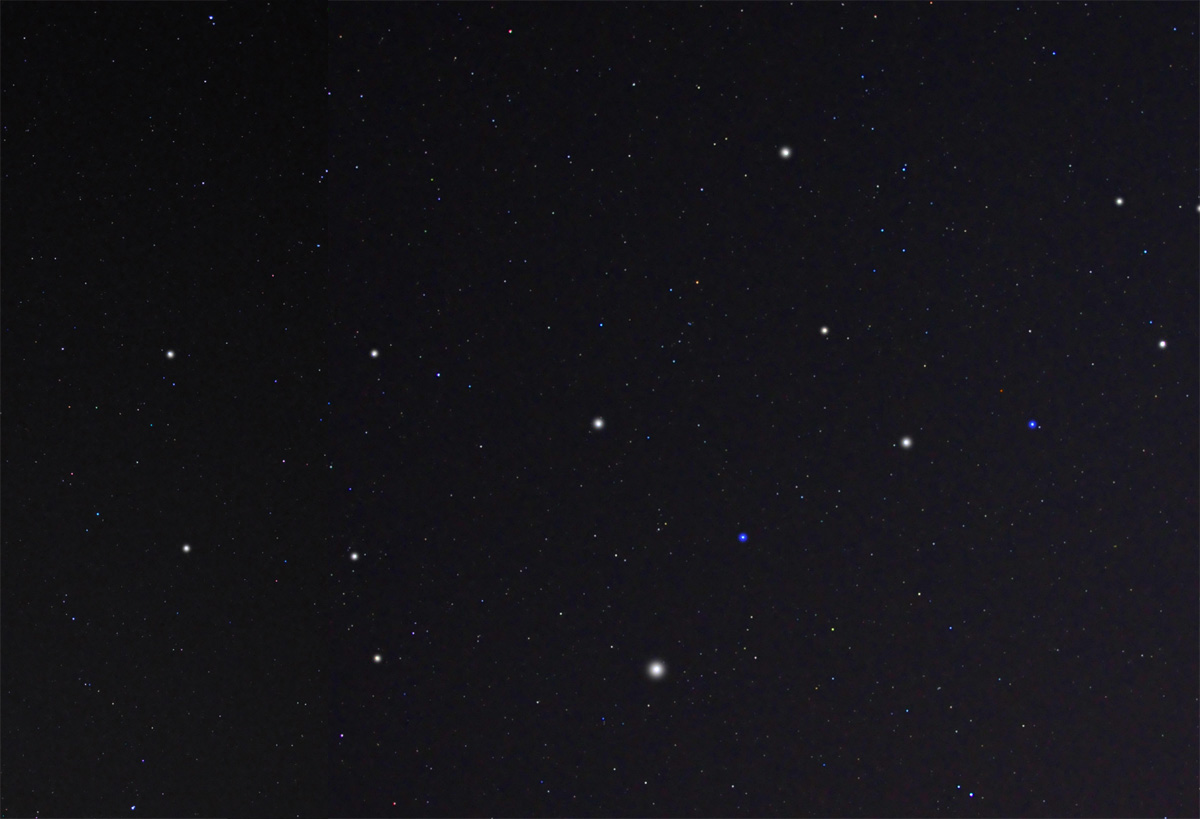Virgo
Virgo, The Virgin, is a large but mostly faint constellation that is most easily viewed in the spring. It does host one bright star, Spica, which at first magnitude stands out from the others and forms Virgo's hip as she lies on her back. Spica is a close binary system whose components orbit each other every 4 days. It is a type B giant star, 7 times the size of our sun and 10 times its mass and it shines with 12,000 times the luminosity of Sol. Spica would be even brighter in the sky if it were not 260 light years distant. Having left the main sequence, Spica is one of the closest stars to our solar system that will one day explode as a supernova. Porrima is another binary system lying 38 light years from Earth. Both components of this system are type F stars with an orbital period of 169 years. Recently, they were at minimum distance from each other and were not separable in amateur telescopes but are now moving far enough apart to be seen optically. Vindemiatrix is a yellow giant star of type G that lies 102 light years distant and Syrma is a type F star which is about 70 light years from Earth.
Virgo is famous for being the location of much of the Virgo Cluster, a conglomerate of more than 1000 galaxies about 50 million light years from our solar system. While only several dozen of these objects are visible in moderately sized telescopes, the total number of member galaxies may be as many as 2,000. Part of the cluster lies in the nearby constellation of Coma Berenices.
 |